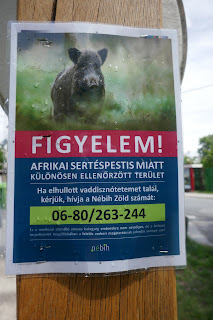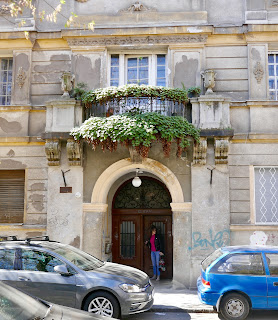Actually, it is wrong to call it merely "an object"; it is a wonder. It is called the Silver Swan, and here is a little film of it in action:
What first drew my attention to the swan's existence was a BBC documentary. It is one of the few pieces of television that has ever really caught my attention, taught me something and inspired me to try to find out more. It is called Mechanical Marvels and its presenter is an academic who spent much of his childhood in Australia but now lives in Cambridge. You can watch it here, and I highly recommend that you do:
Although the silver swan is usually ascribed to James Cox, the person who probably had most to do with the mechanics of making it was a Belgian who moved to London around 1763, where he began by working for James Cox. The Belgian's name was John Joseph Merlin. He knew Fanny Burney, Samuel Johnson's friend Mrs Thrale, JC Bach and the painter Gainsborough, who made this portrait of him:
Merlin was an instrument maker, an inventor and a clock maker, but his main passion seems to have been the making of marvellous toys. It may have been via this preoccupation that he came to know Gainsborough, as the painter's brothers - John, or 'scheming Jack', and Humphrey - were also both fond of inventing curiosities. John/Jack supposedly invented a self-rocking cradle, a 'boon to mothers' and a wheel which turned in a still bucket of water, (a boon to no one, I would have thought), and spent a lot of time trying to fly with a pair of cardboard wings, (I presume without success). Humphrey invented various boringly unplayful things to do with ploughing and steam engines, but he also made a clock powered by musket balls descending into a small bucket, which sounds more like fun. This clock of Humphrey's ended up being owned by a person called Philip Thicknesse, who Gainsborough painted - I only mention him because I found in the entry in Wikipedia about him a detail that I have never been able to forget: it details a clause in his will that can only be described as an example of taking the desire of a parent to influence a child's behaviour a step too far (a step beyond the grave, indeed):
'His will stipulated that his right hand be cut off and delivered to his son, George, who was inattentive, "to remind him of his duty to God after having so long abandoned the duty he owed to a father, who once so affectionately loved him."'
John Joseph Merlin set up "Merlin's Mechanical Museum" in Hanover Square - you can look at the catalogue here. Sadly, I don't believe any of his automata, besides the silver swan, survive - let alone those of the man thought to have inspired him, John Vaucanson*. I would have liked to see Merlin's "Silver Lady", which was extolled by Charles Babbage - you can read some of what Babbage said about it here, (according to that blog post, Merlin also invented roller skates)
 |
| Silver fish, leaping up to be eaten by the silver swan - although, as the Bowes guide pointed out when we were there, swan do not actually eat fish |
----------------------------------------------------------------------------------
* Vaucanson made three celebrated single-figure automata: a flute player; a pipe and drummer; and a gilded-copper duck, which could eat, drink and perform 'all the quick motions of the head and throat which are peculiar to the living animal', according to the French Academie des Sciences (although Hogarth was less impressed, saying that it was just "a little clockwork machine, with a duck's head and legs fixed to it ... a complicated, confused and disagreeable object" - but perhaps he was in a bad mood the day he saw it.)




































